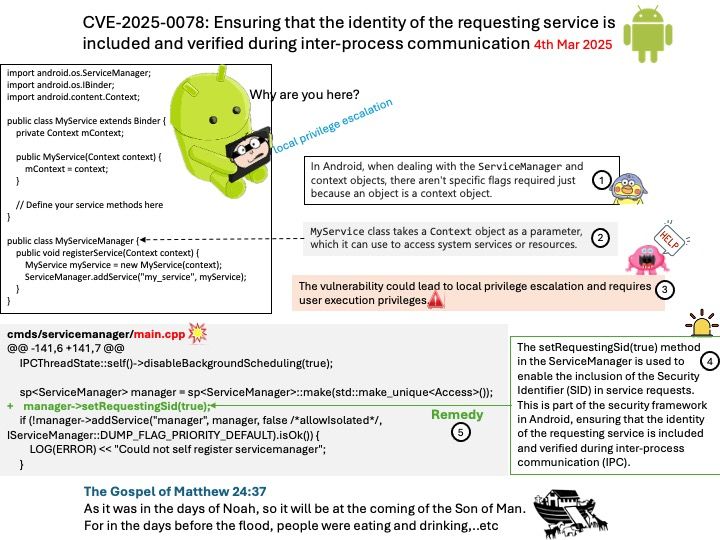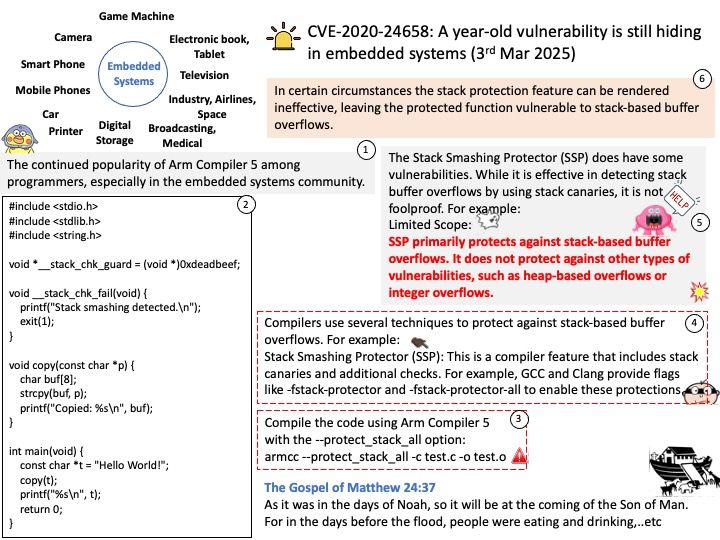
Preface: The Gospel of Matthew 24:37
As it was in the days of Noah, so it will be at the coming of the Son of Man. For in the days before the flood, people were eating and drinking,..etc
Background: In Android, the ServiceManager is a key component in the Binder IPC (Inter-Process Communication) mechanism. It manages system services and provides a way for clients to obtain references to these services.
Here’s a brief overview of how the ServiceManager operates:
- Initialization: The ServiceManager is started by the init process during the system boot. It is defined in the init.rc script, which specifies the service and its executable path.
- Service Registration: When a service wants to register with the ServiceManager, it calls the addService method. This method takes the service name and a reference to the service’s Binder interface.
- Service Lookup: Clients can query the ServiceManager to get a reference to a registered service using the getService method. This method returns the Binder interface of the requested service.
- Security and Permissions: Starting from Android 8.1, SELinux policies have become stricter. Services must be defined in the plat_service_contexts file to be allowed to register with the ServiceManager. This ensures that only authorized services can be registered and accessed..
- Communication: Once a service is registered, clients can communicate with it through Binder IPC. The ServiceManager acts as a mediator, ensuring that the communication is secure and efficient.
Vulnerability details: local privilege escalation
Bug fixes: The setRequestingSid(true) method in the ServiceManager is used to enable the inclusion of the Security Identifier (SID) in service requests. This is part of the security framework in Android, ensuring that the identity of the requesting service is included and verified during inter-process communication (IPC).
Official announcement: Please refer to the vendor announcement for details – https://android.googlesource.com/platform/frameworks/native/+/c32d4defe0f4e5cad86437d6672de7a76caf1a79

